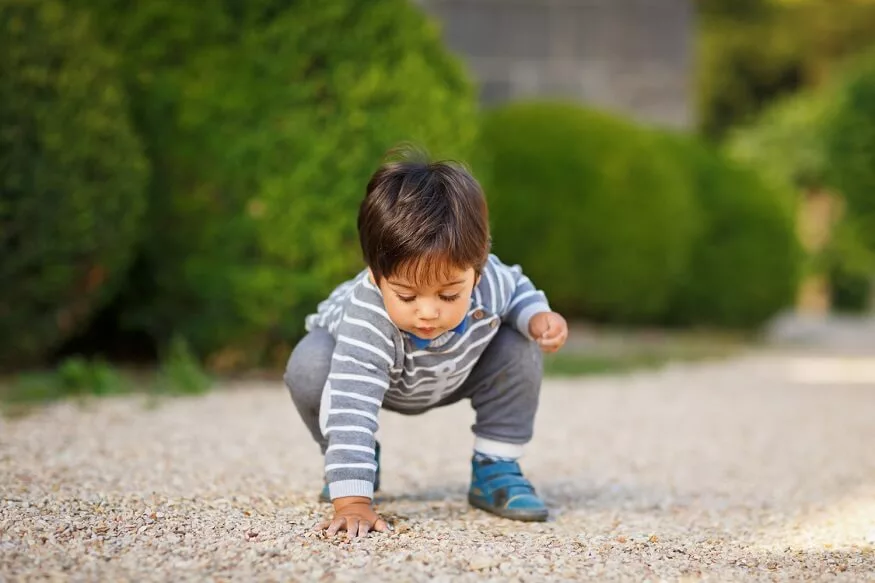Animal walks are a form of exercise that mimic the movements of various animals. This playful approach to physical activity is not only enjoyable but also offers a wide range of benefits, especially for children. By engaging in animal walk exercises, kids can improve their physical fitness, coordination, and balance, all while having fun.
Understanding Animal Walks
Animal walk exercises involve imitating the movements of different animals. For example, a “bear crawl” involves walking on all fours with straight legs and arms, similar to how a bear moves. Other examples include the “crab walk,” where one moves backwards on hands and feet with the stomach facing up, and the “frog jump,” where one leaps forward from a squatting position, mimicking a frog’s jump.
Also Read: Animal Safety for Kids: How to Approach or Avoid Animals
The Benefits of Animal Walk Exercises
- Physical Fitness: These exercises are a full-body workout, engaging multiple muscle groups. Children develop strength and endurance as they crawl, jump, and move in ways they don’t typically do in regular play or traditional sports.
- Coordination and Balance: Animal walks require coordination and balance. As children learn to control their movements to imitate different animals, they enhance their motor skills and body awareness.
- Flexibility: Many animal walk exercises involve movements that stretch and flex various parts of the body. This improves flexibility, which is crucial for overall physical health.
- Cognitive Development: Understanding and replicating the movements of animals also engage a child’s cognitive skills. They learn to follow instructions, remember sequences, and understand the concept of mimicking.
Also Read: Fun And Easy-To-Make Animal Crafts For Kids Of All Ages
How To Incorporate Animal Walks Into Kids’ Routine
Incorporating animal walks into children’s routines is an excellent way to encourage physical play. It breaks the monotony of traditional exercises and introduces an element of fun and creativity. By pretending to be different animals, children are more likely to stay engaged and interested in physical activity. Here’s how to incorporate animal walks into your child’s routine:
- Start with a Warm-Up Routine
- Create Themed Days or Sessions
- Integrate into Learning Activities
- Use Animal Walks as Transitions
- Incorporate into Playtime
- Set Up Obstacle Courses
- Regularly Introduce New Animals
- Family Participation
- Use as Break Activities
- Positive Reinforcement
- Adapt to Space and Age
- Integrate into Routine Exercises
Introduce Animal Walks as a Warm-Up: Begin any physical activity session with simple animal walks. For example, start a morning routine or a physical education class with a bear crawl or frog jumps. This not only warms up their muscles but also sets a fun tone for the session.
Animal-Themed Days: Designate specific days for animal walks, like ‘Zoo Tuesday’ or ‘Jungle Thursday’, where each day is dedicated to movements based on different animals. This keeps the activity fresh and exciting.
Educational Integration: Combine animal walks with learning about animals. For instance, before imitating a kangaroo’s hop, discuss interesting facts about kangaroos. This approach integrates physical and cognitive learning.
Transition Between Activities: Use animal walks as a fun way to transition between different activities or classes. For example, children can crab walk to the next activity station or bear crawl back to their desks after a break.
Imaginative Play: Encourage children to use animal walks during their playtime. This could be part of a game or a storytelling session where they act out stories or scenarios using animal movements.
Obstacle Courses: Create obstacle courses that require different animal movements to navigate. This not only makes the exercise more challenging but also more engaging.
Variety and Challenge: Regularly introduce new animal walks to keep the routine challenging and interesting. As children master one animal walk, introduce another to keep them motivated and engaged.
Involve Family Members: Encourage family members to participate in animal walk activities. This not only makes it more fun but also promotes a healthy lifestyle for the entire family.
Short Breaks: Incorporate brief animal walk sessions during breaks, especially if children have been sitting for long periods. A quick frog jump session or a bear crawl race can be a great energy booster.
Encourage and Praise: Always provide positive reinforcement. Praise their efforts and creativity in imitating animals. This will boost their confidence and enjoyment of the activity.
Be Adaptable: Modify the animal walks based on the available space and the age of the children. Ensure that the movements are safe and appropriate for their developmental stage.
Part of Regular Exercise: Make animal walks a regular part of physical education or daily exercise routines. Mixing them with other forms of exercise can enhance overall fitness.
Incorporating animal walks into a child’s routine is about creativity and flexibility. The key is to make these exercises fun, engaging, and adaptable to different environments and situations. By doing so, children not only benefit from the physical aspects of these exercises but also develop a love for activity and an imaginative approach to fitness.
Also Read: Animals and Their Homes
Animal Walk Workout: A Holistic Approach
An animal walk workout can be a structured part of a child’s fitness regime or a spontaneous play activity. It can be incorporated into physical education classes, sports training, or even as a fun activity at home. The versatility of animal walks makes them a suitable exercise for various settings, whether it’s in a spacious gym or a small backyard.
Animal walk exercises offer a unique and enjoyable way to promote physical fitness among children. These activities not only help in developing strength, flexibility, and coordination but also encourage cognitive development and creativity. By incorporating animal walks into play and exercise routines, children can enjoy the benefits of physical activity in a fun, engaging, and imaginative way.
In essence, animal walks for kids represent a playful fusion of exercise and imagination, transforming the sometimes tedious task of physical exercise into an exciting adventure. As they crawl like a bear, jump like a frog, or walk like a crab, children are not just playing; they are building the foundations of lifelong physical and cognitive wellness.
EuroSchool emphasises holistic development by actively engaging students in play and activities.










